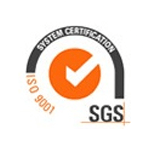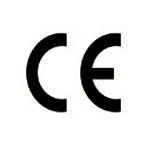Advantages of thin-walled stainless steel tubes

1. The benefits of using thin-walled stainless steel pipes
The emergence of the press-fit connection construction process for thin-walled stainless steel pipes is exactly what happened. This process has obvious advantages in terms of labor, machinery, materials, etc., and is suitable for widespread promotion.
2. Features
2.1 The construction time is greatly shortened
After the pipe is inserted into the pipe fitting, press it with a special pressing tool, and the connection can be completed in an instant. There is no need for complicated threading operations during threaded connection, and no need for pre-processing and post-processing operations during welding, and the overall cost of pipeline construction is greatly reduced.
2.2 Does not require skilled workers
Thread connection or welding connection requires skilled technicians, while the compression pipe fittings series use special compression tools. As long as you pay attention to the construction essentials, anyone can operate and ensure uniform quality.
2.3 Do not use fire source
The pipeline construction site does not use fire sources, and the construction safety performance is greatly improved.
2.4 Clean construction
No cutting fluid or other accessories for threaded connection, and no need for a series of fluxes for welding connection. Therefore, there is no need to consider the various effects of these additives.
2.5 piping lightweight
Because the stainless steel pipe is thin-walled, it has a large flow rate compared with other pipe types, and the lightweight advantage of piping for super high-rise buildings is particularly obvious.
3. Scope of application
is suitable for cold water, hot water, drinking water and clean water pipelines of various civil buildings.
5.2.3 The appearance and joints of pipes and pipe fittings should be carefully inspected, and dirt and impurities on pipe fittings and pipes should be removed in time.
5.3 Pipe laying
5.3.1 When the pipeline is exposed, it should be installed after the civil engineering is finished. Before installation, check whether the position of the reserved hole is correct.
5.3.2 The distance between the thin-walled stainless steel pipe fixing brackets should not be greater than 15m, and the distance between the hot water pipe fixing brackets should be determined according to the thermal expansion of the pipeline and the allowable compensation of expansion joints. The fixed support should be set at the variable diameter, branch, interface and both sides of the bearing wall and floor slab.
5.3.4 Plastic pipe clamps can be used when installing pipes with a nominal diameter of not more than 25mm. When metal pipe clamps or hangers are used, plastic tape or rubber should be used between the metal pipe clamps or hangers and the pipe.
5.3.5 Metal pipe clamps or hangers should be used to fix the water hydrants and water distribution points; the pipe clamps or hangers should be set at 40~80mm away from the fittings.
5.3.6 For exposed pipes, the distance between the outer wall and the decorative wall: 40mm when the project diameter is 10-25mm, and 50mm when the project diameter is 32-65mm.
5.3.7 When the pipeline passes through the floor slab, a casing pipe should be installed. The casing pipe should be 50mm higher than the ground and roof, and strict waterproof measures should be taken.
5.3.8 For concealed pipelines, pressure test and acceptance records of concealed works shall be made before sealing. After the pressure test is qualified, it can be filled with cement mortar.
5.3.9 No axial bending or twisting shall be allowed when the pipeline is laid, and no forced correction shall be made when passing through a wall or floor. When it is parallel to other pipelines, the protection distance should be reserved according to the design requirements. When the design is not specified, the clear distance should not be less than 100mm. When the pipelines are parallel, the thin-walled stainless steel pipe in the pipe trench should be arranged on the inner side of the galvanized steel pipe.
B. When inserting, please slowly insert the joint body in a straight line. If the pipe is inserted obliquely and reluctantly, it is easy to cause damage to the sealing ring.
C. If the insertion is too tight, water can be stained on the pipe. Grease is not allowed to lubricate, so as to prevent the grease from degeneration and failure of the sealing ring.
5.4.5 compression connection
Make sure that the groove of the clamping jaw is placed on the arc protruding part of the joint body and clamped in place.
A. Please reconfirm that the mark is within 2mm from the end of the pipe before pressing.
B. When pressing, press the pressing tool until the pressure is released. Insufficient clamping pressure is the cause of joint leakage and lower performance. If there is any slack in the clamped place, press it again at the original clamped place.
C. The threaded pipe fittings should be tightened with the ribs first and then clamped to prevent the clamped joints from loosening due to the screwing of the ribs.
D. When the piping is bent, please correct it at the straight pipe part, not at the pipe fitting part, otherwise it may cause the clamping part to loosen and cause leakage.
5.4.6 Compression check
Use a special gauge to check whether the dimensions are in place after pressing to prevent poor construction. Check the clamping size carefully. When the gauge cannot be put into the clamping place, it should be clamped again or cut off and reinstalled.
Classification navigation:
1、Alloy steel pipe 2、Stainless steel tube 3、Stainless steel welded pipe 4、Reducing pipe
5、High Pressure Thick Wall Pipe Fitting 6、Elbow 7、Flange 8、Spigot Pipe Fitting
9、Tee 10、Tube Cap 11、Pipe Fitting













